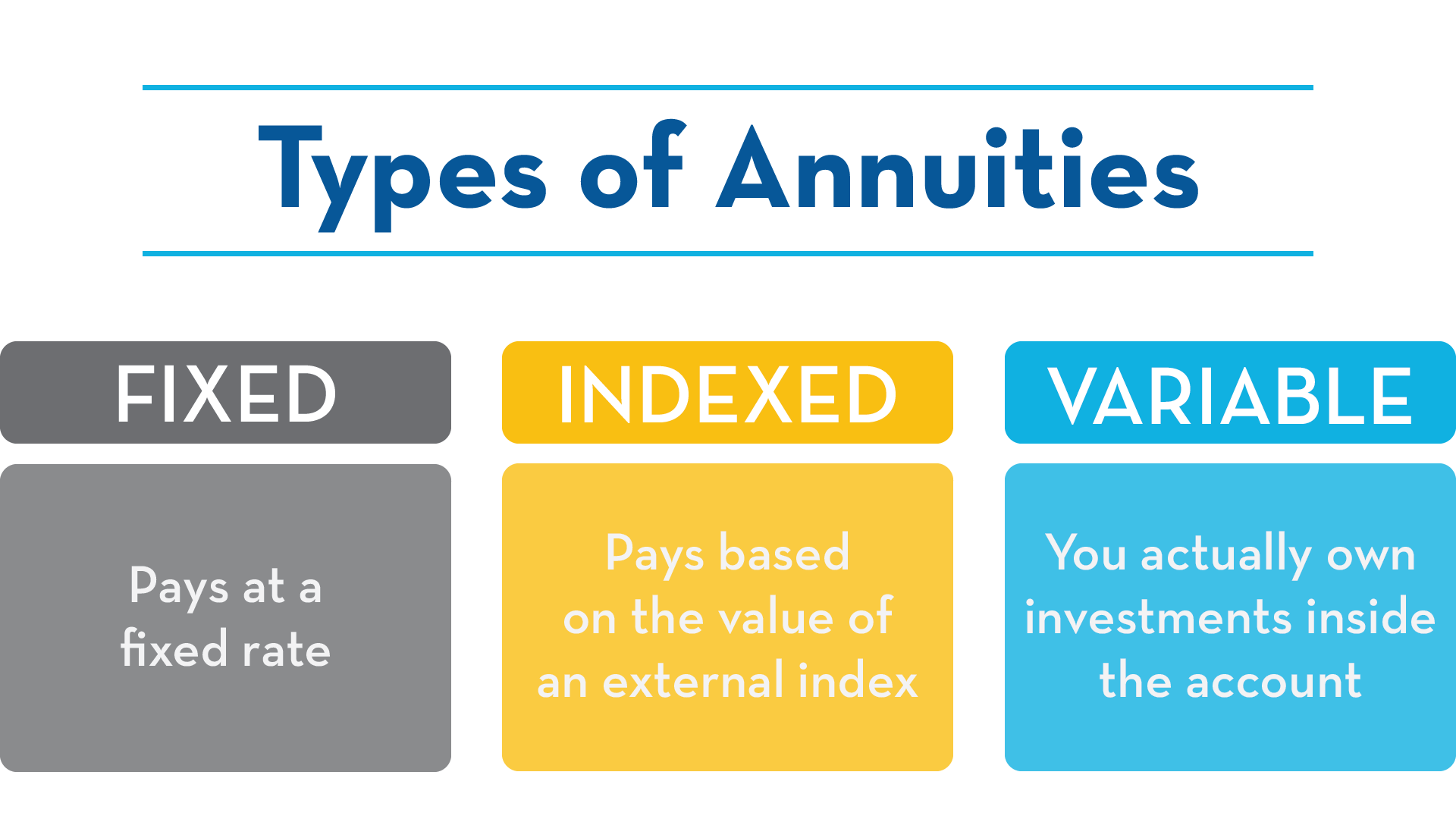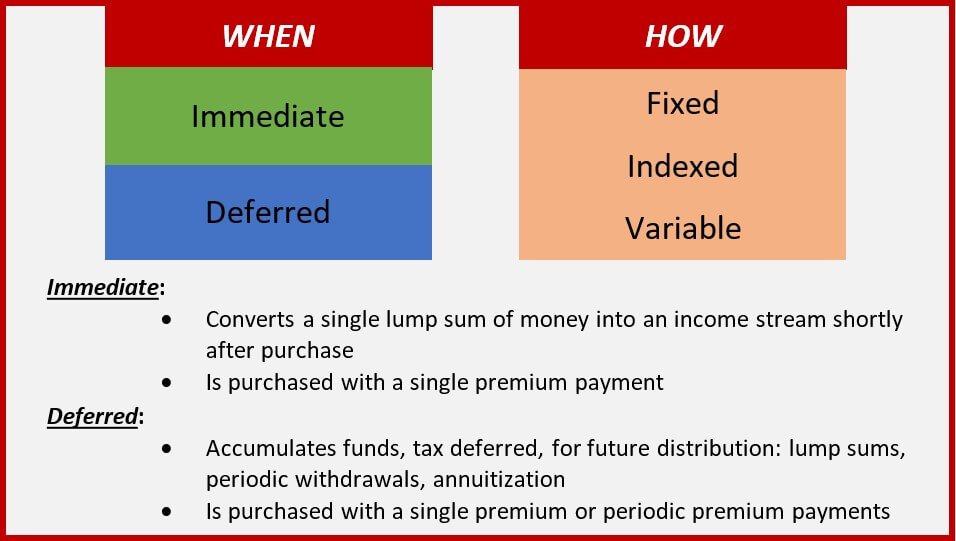All Categories
Featured
Table of Contents
Equally as with a dealt with annuity, the owner of a variable annuity pays an insurance provider a swelling amount or collection of settlements for the assurance of a series of future payments in return. Yet as discussed over, while a dealt with annuity grows at an ensured, constant rate, a variable annuity grows at a variable price that depends upon the efficiency of the underlying financial investments, called sub-accounts.

Throughout the accumulation stage, properties bought variable annuity sub-accounts expand on a tax-deferred basis and are tired just when the agreement proprietor withdraws those earnings from the account. After the accumulation phase comes the income stage. Gradually, variable annuity assets need to theoretically boost in value up until the agreement owner decides he or she want to begin taking out money from the account.
The most substantial issue that variable annuities commonly present is high cost. Variable annuities have numerous layers of costs and costs that can, in accumulation, develop a drag of up to 3-4% of the agreement's value each year.
Analyzing What Is A Variable Annuity Vs A Fixed Annuity Key Insights on Fixed Indexed Annuity Vs Market-variable Annuity Breaking Down the Basics of Fixed Vs Variable Annuities Advantages and Disadvantages of Different Retirement Plans Why Fixed Indexed Annuity Vs Market-variable Annuity Is Worth Considering How to Compare Different Investment Plans: Simplified Key Differences Between Different Financial Strategies Understanding the Key Features of Annuity Fixed Vs Variable Who Should Consider Strategic Financial Planning? Tips for Choosing the Best Investment Strategy FAQs About What Is Variable Annuity Vs Fixed Annuity Common Mistakes to Avoid When Choosing a Financial Strategy Financial Planning Simplified: Understanding What Is A Variable Annuity Vs A Fixed Annuity A Beginner’s Guide to Smart Investment Decisions A Closer Look at Fixed Index Annuity Vs Variable Annuity
M&E cost fees are determined as a portion of the contract value Annuity issuers pass on recordkeeping and various other administrative prices to the agreement owner. This can be in the kind of a level yearly fee or a portion of the agreement value. Management costs may be included as component of the M&E danger charge or may be evaluated independently.
These costs can vary from 0.1% for passive funds to 1.5% or more for actively taken care of funds. Annuity agreements can be personalized in a variety of methods to serve the certain needs of the contract owner. Some common variable annuity cyclists consist of assured minimum accumulation advantage (GMAB), guaranteed minimum withdrawal benefit (GMWB), and guaranteed minimal revenue benefit (GMIB).

Variable annuity payments offer no such tax obligation reduction. Variable annuities have a tendency to be highly ineffective lorries for passing riches to the next generation because they do not enjoy a cost-basis adjustment when the original contract proprietor dies. When the owner of a taxed financial investment account passes away, the price bases of the investments kept in the account are adapted to reflect the market prices of those investments at the time of the owner's death.
Exploring Fixed Income Annuity Vs Variable Growth Annuity A Closer Look at Fixed Annuity Vs Equity-linked Variable Annuity Defining the Right Financial Strategy Advantages and Disadvantages of Fixed Indexed Annuity Vs Market-variable Annuity Why What Is A Variable Annuity Vs A Fixed Annuity Matters for Retirement Planning Deferred Annuity Vs Variable Annuity: Simplified Key Differences Between Choosing Between Fixed Annuity And Variable Annuity Understanding the Rewards of Fixed Indexed Annuity Vs Market-variable Annuity Who Should Consider Immediate Fixed Annuity Vs Variable Annuity? Tips for Choosing the Best Investment Strategy FAQs About Planning Your Financial Future Common Mistakes to Avoid When Planning Your Retirement Financial Planning Simplified: Understanding Your Options A Beginner’s Guide to Fixed Vs Variable Annuity Pros And Cons A Closer Look at Variable Annuities Vs Fixed Annuities
Therefore, successors can inherit a taxed financial investment profile with a "fresh start" from a tax viewpoint. Such is not the instance with variable annuities. Investments held within a variable annuity do not get a cost-basis modification when the original owner of the annuity dies. This implies that any kind of accumulated latent gains will be passed on to the annuity owner's heirs, in addition to the associated tax obligation burden.
One considerable problem associated with variable annuities is the potential for disputes of interest that may exist on the part of annuity salesmen. Unlike a financial advisor, who has a fiduciary responsibility to make investment choices that benefit the client, an insurance broker has no such fiduciary obligation. Annuity sales are extremely profitable for the insurance policy specialists who sell them due to high upfront sales commissions.

Many variable annuity agreements have language which places a cap on the percentage of gain that can be experienced by particular sub-accounts. These caps prevent the annuity owner from fully joining a portion of gains that might or else be enjoyed in years in which markets create substantial returns. From an outsider's viewpoint, presumably that investors are trading a cap on investment returns for the previously mentioned ensured flooring on financial investment returns.
As kept in mind over, give up fees can significantly limit an annuity owner's capacity to relocate properties out of an annuity in the very early years of the agreement. Additionally, while a lot of variable annuities allow agreement proprietors to withdraw a defined quantity throughout the build-up stage, withdrawals yet quantity generally result in a company-imposed fee.
Withdrawals made from a fixed rate of interest financial investment choice can additionally experience a "market price adjustment" or MVA. An MVA adjusts the worth of the withdrawal to reflect any changes in rates of interest from the moment that the cash was spent in the fixed-rate alternative to the moment that it was taken out.

Rather frequently, even the salesmen that sell them do not totally understand just how they work, and so salespeople in some cases victimize a buyer's emotions to offer variable annuities instead of the values and viability of the products themselves. Our company believe that investors ought to fully understand what they possess and just how much they are paying to have it.
Understanding Financial Strategies Key Insights on Your Financial Future Defining Fixed Index Annuity Vs Variable Annuities Pros and Cons of Various Financial Options Why Choosing the Right Financial Strategy Can Impact Your Future Fixed Interest Annuity Vs Variable Investment Annuity: Explained in Detail Key Differences Between Fixed Index Annuity Vs Variable Annuity Understanding the Risks of Fixed Vs Variable Annuity Pros And Cons Who Should Consider Fixed Income Annuity Vs Variable Growth Annuity? Tips for Choosing Fixed Index Annuity Vs Variable Annuity FAQs About Variable Annuities Vs Fixed Annuities Common Mistakes to Avoid When Choosing Choosing Between Fixed Annuity And Variable Annuity Financial Planning Simplified: Understanding Your Options A Beginner’s Guide to Fixed Index Annuity Vs Variable Annuities A Closer Look at How to Build a Retirement Plan
Nonetheless, the very same can not be said for variable annuity possessions held in fixed-rate financial investments. These assets legitimately come from the insurer and would as a result be at danger if the company were to fall short. Similarly, any type of assurances that the insurance company has actually accepted supply, such as a guaranteed minimal revenue advantage, would certainly be in inquiry in the event of a service failing.
Possible buyers of variable annuities should comprehend and think about the monetary problem of the providing insurance coverage firm prior to getting in right into an annuity agreement. While the advantages and downsides of various kinds of annuities can be debated, the actual concern surrounding annuities is that of viability. In other words, the concern is: that should have a variable annuity? This inquiry can be hard to answer, offered the myriad variants available in the variable annuity universe, however there are some standard standards that can help investors determine whether annuities must play a function in their economic plans.
Nevertheless, as the claiming goes: "Caveat emptor!" This write-up is prepared by Pekin Hardy Strauss, Inc. Variable growth annuities. ("Pekin Hardy," dba Pekin Hardy Strauss Wealth Management) for informational purposes only and is not meant as an offer or solicitation for service. The details and information in this write-up does not comprise lawful, tax, audit, financial investment, or various other professional guidance
Table of Contents
Latest Posts
Understanding Financial Strategies Everything You Need to Know About Financial Strategies Defining the Right Financial Strategy Pros and Cons of Fixed Income Annuity Vs Variable Growth Annuity Why Fix
Highlighting What Is Variable Annuity Vs Fixed Annuity Everything You Need to Know About Fixed Interest Annuity Vs Variable Investment Annuity Defining the Right Financial Strategy Features of Smart I
Breaking Down Fixed Annuity Or Variable Annuity Everything You Need to Know About Financial Strategies Breaking Down the Basics of Variable Annuity Vs Fixed Indexed Annuity Advantages and Disadvantage
More
Latest Posts